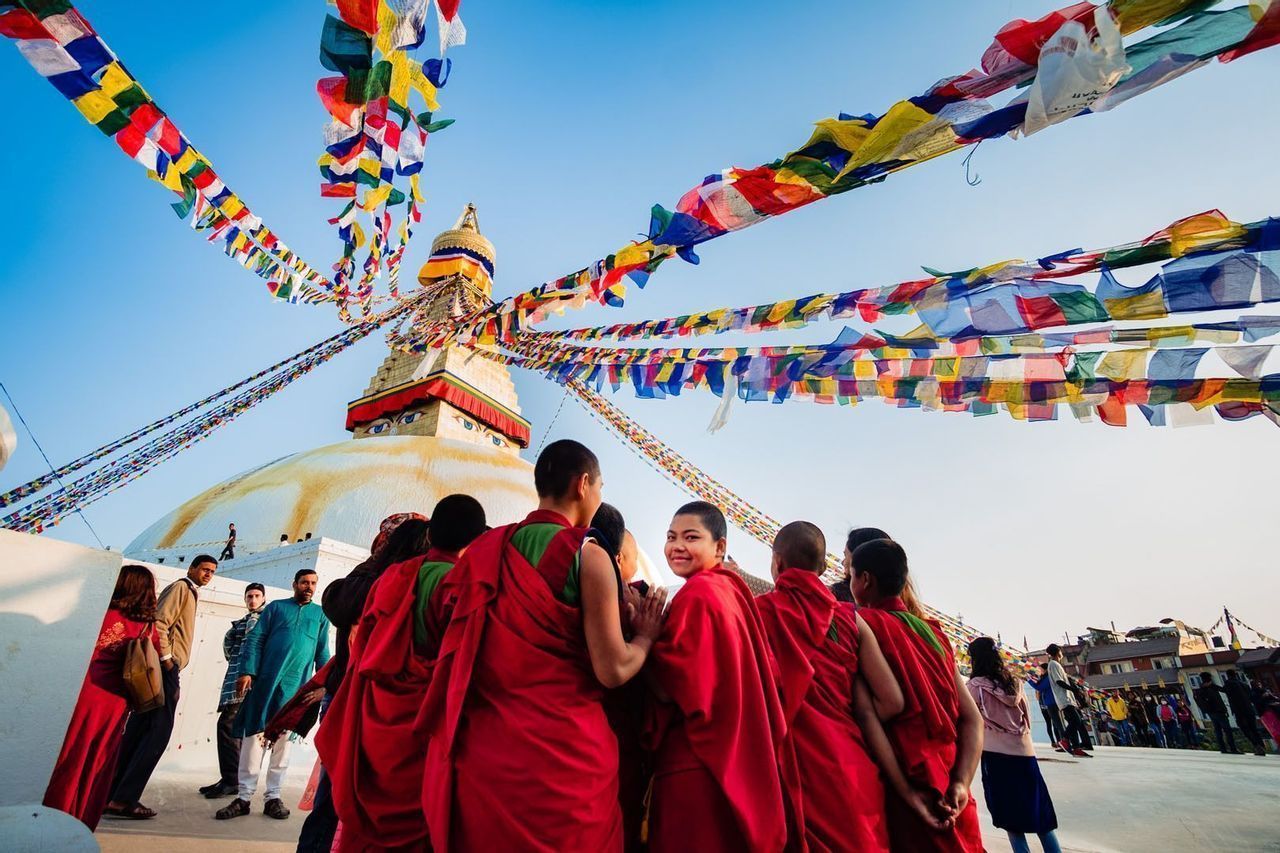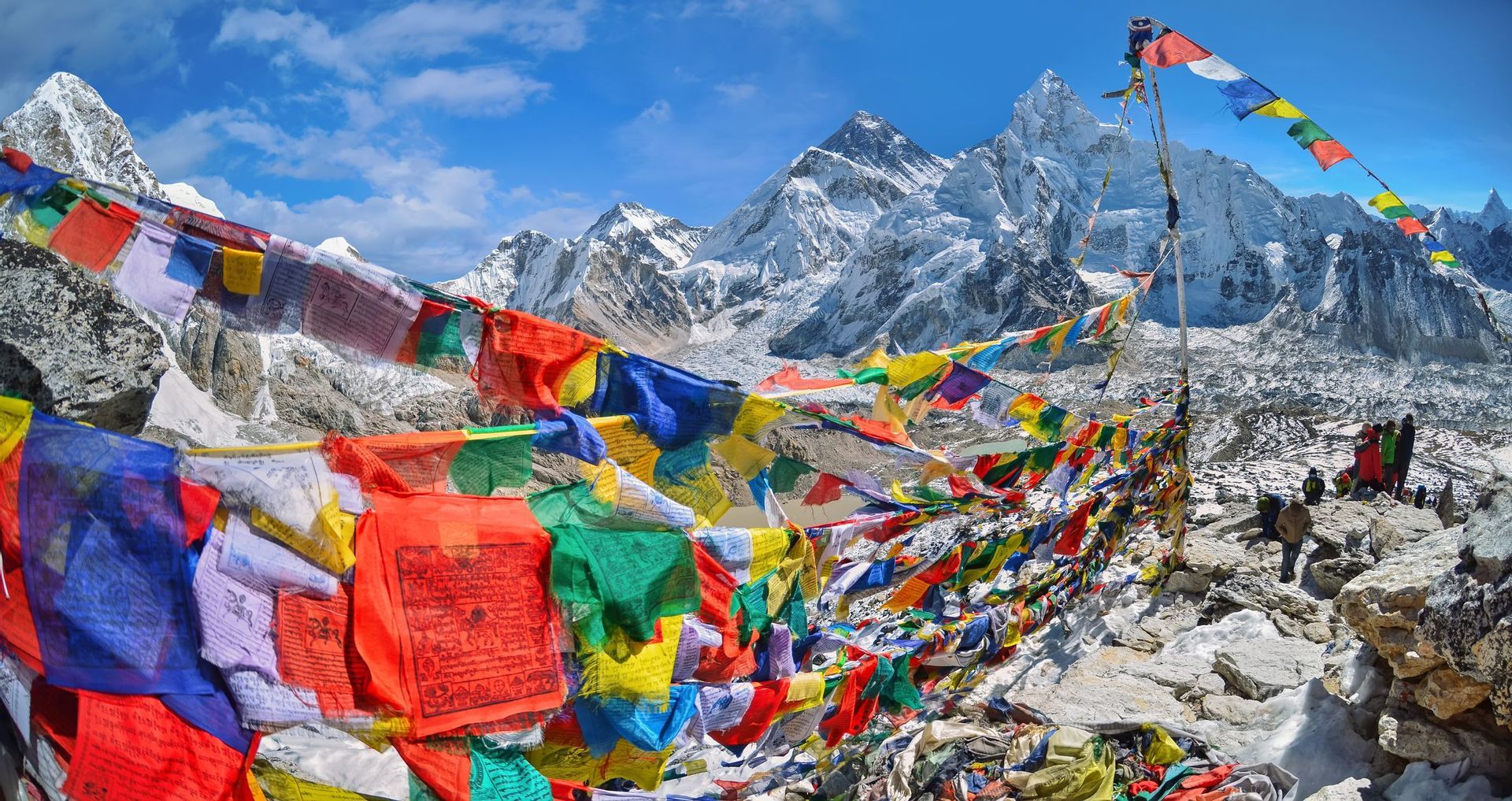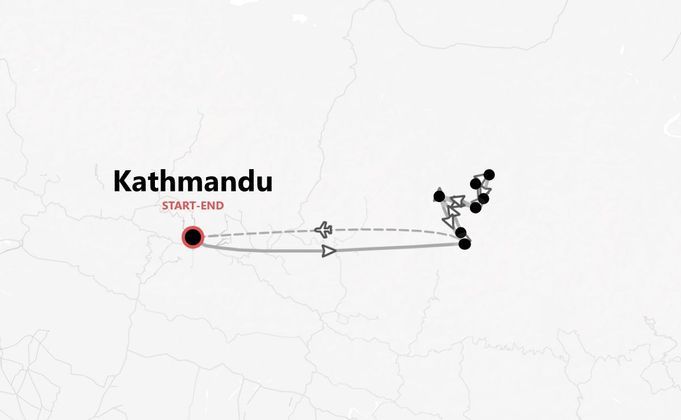
Group trips to Nepal
Our organized trips to Nepal
Beyond its towering peaks, Nepal unfolds as a destination where ancient spirituality seamlessly blends with exhilarating adventure. This is a land where every corner whispers tales of deep history and vibrant living culture, home to both serene spiritual sanctuaries and breathtaking natural wonders. From the intricate temples and bustling squares of the Kathmandu Valley UNESCO World Heritage Site to the majestic, snow-capped giants of Sagarmatha National Park, and the tranquil birthplace of Buddha in Lumbini, Nepal warmly embraces curious explorers and intrepid spirits, inviting them to discover its boundless charm and immerse themselves in its unique allure.
9 days • 8 nights
14 days • 13 nights
FAQs about Nepal
If you are a UK citizen, to find out the entry requirements for Nepal, you can check this informational page from our partner Sherpa. If you need a visa, you can apply for it through Sherpa. If you are not a UK citizen, you can still use Sherpa by changing the nationality in the 'Passport' section.
Before traveling, always remember to check the government website of your country of origin for updates on the entry requirements for Nepal – you wouldn’t want to stay home due to a bureaucratic detail!
- UK residents: review the FCDO Travel Advice.
- US residents: consult the US Department of State Travel Advice.
- Other residents: refer to your government or local consulate's travel advice.
Nepal is in the Nepal Time Zone, which is 5 hours and 45 minutes ahead of Greenwich Mean Time (GMT+5:45). If it is 12pm in the UK, it will be 5:45pm in Nepal. If it is 12pm in New York, USA, it will be 10:45pm in Nepal. Keep in mind that Nepal does not observe daylight saving time, so the time difference remains constant throughout the year.
Nepal uses the Nepalese Rupee (NPR) as its currency. The daily exchange rate can vary, but you might expect approximately:
- 160 NPR for 1 GBP
- 120 NPR for 1 USD
- 130 NPR for 1 EUR
Currency can be exchanged at banks, authorized money changers, and some hotels. Always make sure to get a receipt for any currency exchange you make.
You'll find that in Nepal, you can pay using cash, credit cards, and mobile payment apps. Cash is widely accepted, especially in smaller towns and rural areas, so it's handy to keep some Nepali rupees on you. Major credit cards like Visa and MasterCard are accepted in most hotels, restaurants, and shops in larger cities like Kathmandu and Pokhara, but it's good to double-check before making a purchase. For a more seamless experience, you might also consider using mobile payment services that are gaining popularity, such as eSewa or Khalti.
Tipping in Nepal is not mandatory, but it's appreciated, especially in the tourism industry. In restaurants, you can leave around 10 percent of the bill if a service charge isn't included. For guides and porters, tipping is customary and expected, usually at the end of a trek or tour. Consider tipping guides around 10 percent of the tour cost and porters a bit less. In taxis, rounding up the fare is common. Remember, tips are an important part of income for many workers in Nepal.
In Nepal, internet access can be a bit spotty, especially in rural areas. While Wi-Fi is commonly available in hotels, cafes, and restaurants in cities like Kathmandu and Pokhara, the speed can vary. For more reliable internet access while traveling around, we recommend you buy a local SIM card or an e-SIM data plan. Major providers include Ncell and Nepal Telecom, and you can purchase SIM cards at the airport or local shops. This will help ensure you stay connected even in more remote areas.
Nepal's official language is Nepali. It's widely spoken across the country, but you'll also find a variety of other languages, especially in different regions and among various ethnic groups. Here are some useful Nepali expressions you might hear or use:
- Hello: Namaste
- Thank you: Dhanyabad
- Yes: Ho
- No: Hoina
- How much?: Kati ho?
Having a few basic phrases can help in getting around and interacting with locals.
In Nepal, the standard voltage is 230 V and the frequency is 50 Hz. The plugs used are mostly Type C, D, and M. Since these are different from those used in many European countries and the USA, we suggest bringing a universal adapter to ensure your devices can be charged without any hiccups.
The main religion in Nepal is Hinduism, with a significant portion of the population practicing it. Important religious holidays include:
- Dashain, a major festival celebrating the victory of good over evil.
- Tihar, which is similar to Diwali and involves the worship of animals and brothers.
- Another key festival is Holi, the festival of colors, which is widely celebrated.
While Hinduism is predominant, there are also communities practicing Buddhism, Islam, and Christianity in the country.
Packing for Nepal can be quite an adventure due to its diverse climate and terrain. Here's a handy guide to help you prepare your backpack:
-
Clothing:
- Lightweight shirts
- Warm fleece or jacket
- Waterproof jacket
- Trekking pants
- Thermal base layers
-
Shoes:
- Comfortable trekking boots
- Sandals or flip-flops
- Warm socks
-
Accessories and Technology:
- Hat or cap
- Sunglasses
- Power bank
- Camera with spare batteries
- Travel adapter (Nepal uses type C, D, and M plugs)
-
Toiletries and Medication:
- Travel-sized toiletries
- Sunscreen
- Insect repellent
- Basic first aid kit
- Common travel medications like anti-diarrheal, pain relievers, and antihistamines
This list should cover the essentials for your trip to Nepal, keeping you prepared for both trekking and city exploration.
Nepal's weather varies significantly by region and altitude, so here's a quick breakdown:
- Kathmandu Valley and Central Nepal: Generally mild, with warm summers and cool winters. The best time to visit is from October to December and March to April when the weather is pleasant.
- Terai Region (Southern Nepal): Hot and humid, especially from May to September. Winters are mild. October to March is ideal for cooler weather.
- Himalayan Region: Cold year-round with heavy snowfall in winter. Trekking is best from March to May and September to November when trails are clear.
Overall, Nepal has a monsoon season from June to September, so if you're not a fan of rain, you might want to avoid visiting during these months.



